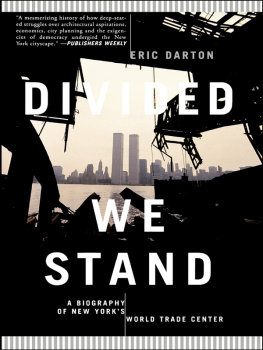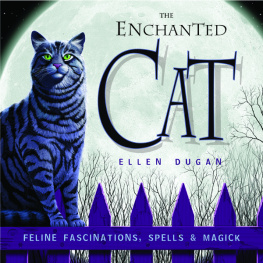TRACEY LORD
with
LUCY ADAM
KATIE CLAMMER
LINDSAY OBERMEYER
PAULINE RICHARDS
DEBORAH SMETHURST
LINDEY TYDEMAN
A SQUARE A DAY
365 CROCHET SQUARES
one for each day of the year

Easy-to-use and inspirational, heres one book that every crocheter will keep coming back to. A Square A Day offers you a treasury of patterns for the perennially popular granny square.
Every six-inch square is shown large on the page, with its pattern and a difficulty rating alongside. A sturdy lie-flat binding makes it easy to check the pattern and crochet at the same time, and the squares themselves are suitable for a range of abilities from beginner up. The book is arranged in a rainbow, ranging from deep reds and pinks through oranges, yellows, blues, and greens, all the way through to purple and violet, so you can use it as inspiration when rummaging through your wool stash and choosing colours for your next project. Every crocheter loves a granny square so indulge yourself with this, the biggest and best compendium ever!
contents
introduction
Crochet squares have a long and well-documented history within the field of hand-made textiles. All around the world different cultures have a tradition of working in motifs to create beautiful linens and exquisite shawls. Because of its versatility, crochet has enjoyed many revivals over the years, but in modern times it has seen an increase in popularity because it is so fast, economical and portable; what could be better than working on your gorgeous new blanket while travelling to work on the train? Or perhaps the prospect of relaxing after a long day by making a square each evening, and using up pieces of your yarn stash at the same time, is irresistible? Either way, this book contains a wealth of potential for the creation of future heirlooms, thoughtful gifts and stylish home furnishings.
This book is intended to be a comprehensive collection of crochet square designs that can be combined into a range of pieces, from throws and afghans to handbags and curtains. We have included squares to suit all levels of ability, from the novice to the more experienced crocheter. The squares are a mix of traditional in-the-round and linear grannies, and sometimes a combination of the two. Besides the classic designs there are lace, textural, three-dimensional and colourwork squares as well as flowers, composite blocks, cables and baubles. In short, something to tempt every crocheters taste. The collection includes both classic and historical motif designs updated in modern colours, as well as a huge range of original blocks created specially for this book. Whether your taste is for floral or lacy, textural or modern, there is plenty to capture your imagination and get you hooked. We have arranged the designs in a delicious rainbow of colours that are bound to have you itching to get started. However, be warned that making motifs is an addictive pastime; even though this is an immense collection of designs, all the contributors and the author found they still had even more designs in their sketchbooks after this book was completed, and found it hard to stop creating.
Crochet is so much fun to play with, so do play. Crochet squares are the perfect medium for creating stunningly colourful pieces that you will treasure for ever. We hope this book will start you off on a lifelong love affair with granny squares.
Using the squares
The squares in this book are designed to work up to about the same size, allowing you to intermix them at will. You might choose to alternate different designs to create a pillow, or you could use several colour variations of a single square to make a blanket. Suggestions for use are given with many of the squares, but these are far from exhaustive. The beauty of working in motifs is that they lend themselves to such a wide range of possibilities, so you are positively encouraged to make your own choices and to devise your own colour combinations.
Each square has a symbol denoting the skill level required to complete it (see ). Basic stitch knowledge is all that is needed for the beginner squares, while the most complex-rated ones involve a series of different techniques and require the ability to follow a detailed pattern. Initially, choose designs that match your current level of skill and, when you are comfortable, challenge yourself with some blocks from the next level up.
There is a stitch reference section to guide you through creating less familiar stitches, and when a square uses an unusual technique or stitch this is explained at the start of the instructions. We have also included advice on how to choose colours, materials and equipment, as well as covering techniques for joining squares into a finished piece. What is not included are any prescriptive designs for completed pieces. We hope that you will use this book as inspiration to create your own unique pieces that are entirely personal to you.

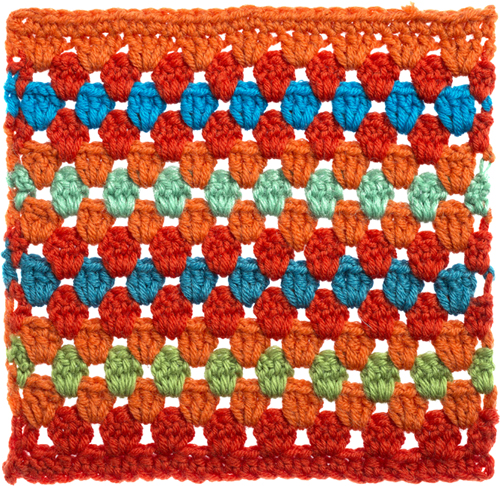
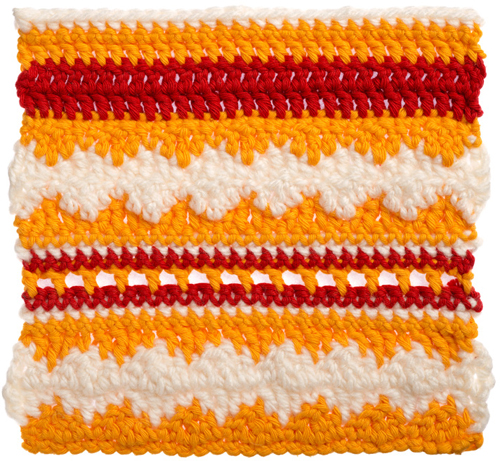

When choosing squares for your project bear in mind the end use of the piece: heavier, densely textured blocks will produce a warm fabric whereas lacy, open-textured ones will offer an airy lightness. Light or heavy blocks can be successfully mixed with medium-weight squares without greatly affecting the balance of the resulting piece, but you can also choose to blend light and heavy blocks deliberately to create a contrasting effect.
There are several ways you can approach creating your own design for a larger piece. If you are confident at drawing, simply drawing out your design idea is the most straightforward option. You could trace the design from the book to speed the process up, or use large-scale graph paper and make a design plan using coloured pencils or pens.
Another very simple method is to make up one square from each of the designs youve chosen and then make colour copies or scans of each one. Create a few more copies than you think you need of each particular square. Cut out the copied squares and arrange them until you are happy with the overall design, then secure it on a larger piece of paper as a guide while working. For a larger project you could work out part of the design in this way, then repeat it over again to your chosen size.
If you feel confident with technology, a digital program is particularly helpful when working out larger, more complex arrangements for bigger items such as blankets. Make a sample square of each type you plan to use, photograph it and save the photographs on to a computer its a good idea to reduce the size of each file at the same time to avoid an enormous, unworkable document. Open a new document in a word-processing or image-manipulation program and paste the photographs beside each other in repeat, moving them about until you are happy with the arrangement. This method also allows you to change colours, which is useful if you have a complicated design. Save the file when you are happy with the finished result.
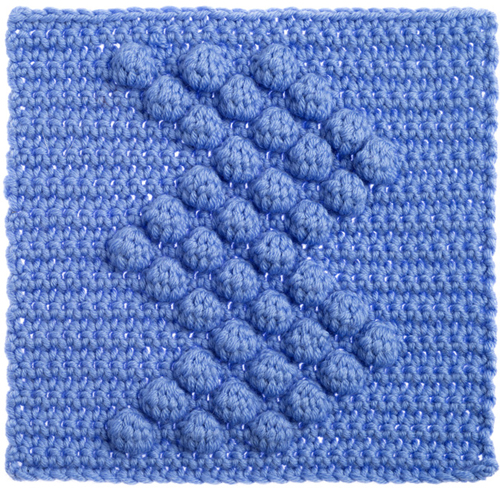
Next page

